From Hara Museum, Tokyo
Ming Wong: Life of Imitation
June 25 (Sat.) – August 28 (Sun.), 2011
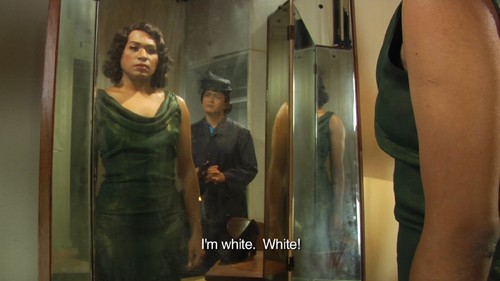
Video still from Ming Wong, Life of Imitation, video audio installation, 2009
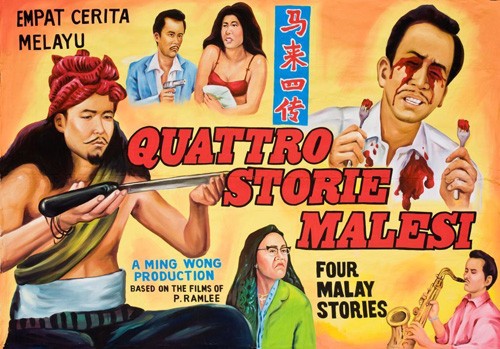
Neo Chon Teck (designed by Ming Wong), Four Malay Stories, acrylic emulsion on canvas, 2009
The Hara Museum of Contemporary Art is pleased to present Ming Wong: Life of Imitation, an exhibition by the Berlin-based Singaporean artist Ming Wong (b. 1971), which won the Special Jury Mention Award at the 53rd Venice Biennale in 2009. This much lauded installation was restaged by the Singapore Art Museum with a new design and additional exhibits for Singaporean audiences and subsequently traveled the show to Seattle and Tasmania to much acclaim.
To be reconfigured to suit the unique space of the Hara Museum, the exhibition consists of three video installations that reenact scenes inspired by world cinema. These include films by P. Ramlee (1929-73), the father of Malay cinema and entertainment industry icon; Imitation of Life (1959) by Douglas Sirk (1897-1987), known for his Hollywood melodramas; and the Hong Kong film In the Mood for Love (2000) by Wong Kar Wai (1958-). Through the use of miscasting, mimicry and comical elements, Wong draws attention to such issues as race, cultural identity, gender and language.
Also included in the exhibition are billboards by Neo Chon Teck, Singapore’s last cinema billboard painter, cinema memorabilia belonging to Singaporean collector Wong Han Min and images of classic cinema architecture captured by the artist in a series of Polaroid snapshots. In looking back on the Golden Era of Singaporean cinema (of the 1950s and 1960s), these works invite the viewer to ponder Singapore’s multiracial, multilingual, and multicultural nature and the state of people living in a society undergoing rapid globalization.
*This exhibition first appeared at the 53rd Venice Biennale in 2009 (curated by Tang Fu Kuen). Its presentation at the Hara Museum is co-organized with the Singapore Art Museum.
Highlights
・The first solo exhibition in Japan by a rising young artist who has become the focus of increasing international attention.
・An award-winning exhibition featured at the Venice Biennale—a large-scale international contemporary art fair with over 100 years of history–to be re-staged and reconfigured to suit the unique space of the Hara Museum.
・In addition to Ming Wong’s video installation inspired by the Golden Era of Singapore cinema, which forms the centerpiece of the show, the exhibition will feature photographs, cinema billboards, cinema memorabilia such as tickets and leaflets from the 1950s and 60s, and a documentary that takes up people who inhabit the periphery of the movie world.
・Depicted here is the human predicament, mixed in with much humor, from the perspective of the multi-ethnic and multi-lingual melting pot that is Singapore.
Exhibition title: Ming Wong: Life of Imitation
Dates: June 25 (Sat.) – August 28 (Sun.), 2011
Organized by: Hara Museum of Contemporary Art, Singapore Art Museum
Supported by: MRA Foundation Japan
Guest Curated by: Tang Fu Kuen
Place: Hara Museum of Contemporary Art. 4-7-25, Kitashinagawa, Shinagawa-ku, Tokyo 140-0001
Tel 03-3445-0651 Fax 03-3473-0104
E-mai info@haramuseum.or.jp
http://www.haramuseum.or.jp
http://mobile.haramuseum.or.jp (mobile site)
https://www.art-it.asia/en/u/HaraMuseum_e/ (blog)
Twitter http://twitter.com/haramuseum (in Japanese only/ Account name: @haramuseum)
Hours: 11:00 am–5:00 pm, Wednesdays until 8:00 pm (last entry 30 min. before closing. Opening time is subject to change due to the power shortage in the Kanto region. Please check the museum’s website for updates)
Closed: Mondays (open on July 18), July 19
Admission: General 1,000 yen; Students 700 yen (high school and university) or 500 yen (elementary and junior high); Free for Hara Museum members, students through high school every Saturday during the school terms; 100 yen discount per person for groups of 20 or more.
Directions: 5 min. by taxi or 15 min. on foot from JR Shinagawa Station (Takanawa exit); or from the same station take the No.96 bus, get off at the first stop (Gotenyama), and walk 3 min.
Related event: Meet the Artist and Curator: Dialogue between Ming Wong and Tang Fu Kuen
Date: June 25 (Sat.) 2:00 pm – 3:30 pm
Place: The Hall at the Hara Museum of Contemporary Art
Fee: free (museum admission is required)
Reservation: please make your reservation by phone or e-mail. First come, first served.
Tel: 03-3445-0669
E-mai:info@haramuseum.or.jp
English with Japanese interpretation
As an event related to the exhibition Ming Wong: Life of Imitation, there will be a dialogue between the artist Ming Wong and the guest curator Tang Fu Kuen. They will talk about how the current exhibition came about, about Wong’s success at the Venice Biennale, and the Golden Age of Singapore cinema.
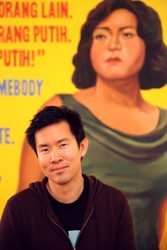
Ming Wong
Ming Wong was born in Singapore in 1971. After being involved in the theater scene, he went on to study at Nanyang Academy of Fine Art and received a Diploma in Fine Arts (Chinese Art) from in 1995 and an MFA (Fine Arts/ Media) at the Slade School of Art, University College London in 1999. In 2008, Ming undertook a one year artist residency at the Kunstlerhaus Bethanien in Berlin, Germany. Ming has made significant in-roads internationally with his participation in numerous group and solo visual arts exhibitions in Europe, North America and Asia. He is scheduled to exhibit work at the 2011 Singapore Biennale. He currently resides in Berlin and Singapore. http://www.mingwong.org
Tang Fu Kuen
He read media at Goldsmiths College in London, and currently lives in Singapore and Thailand. He is a curator and dramaturg working in different contexts, from performance to film and visual arts, across contemporary and heritage arts development, between Asia and europe. He is the program advisor for Singapore Arts Festival and Indonesian Dance Festival.
Featured Works

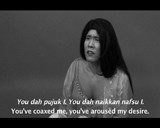
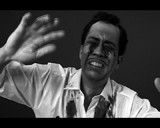
Four Malay Stories Video audio installation, 25 minutes (4 screens, looped), 2005
Ming Wong himself plays 16 stock characters from films by P. Ramlee, a major figure in the Golden Era of Singapore cinema, ranging from comedy, melodrama, social drama and period drama. Wong re-enacts classic lines and gestures from these films–through repeated takes– in his vain attempt to master his lines in Malay Language.
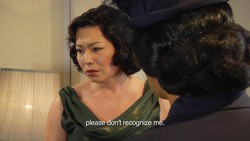
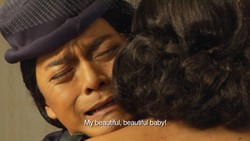
Life of Imitation Video audio installation, 13 minutes (2 screens, looped), 2009
In this work, Ming Wong pays homage to the Hollywood melodrama of Douglas Sirk (1897-1987) Imitation of Life (1959) which raised the issue of racial identity. In this re-enactment, three male actors from the main ethnic groups in Singapore (Chinese, Malay, Indian) take turns playing a black mother and her mixed-race daughter Sarah Jane.
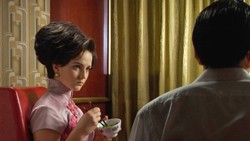
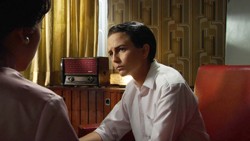
In Love For The Mood Video audio installation, 4 minutes (3 screens, looped), 2009
In reference to In the Mood for Love (1960), the Hong Kong movie of Wong Kar Wai (b. 1958), In Love For the Mood was conceived as a “rehearsal of a rehearsal.” A Caucasian actress plays both of the star-crossed lovers Mrs. So and Mr. Chow. Mrs. So is rehearsing how to confront her husband’s infidelity, with her lover Mr. Chow standing in for her husband. The actress speaks the lines in Cantonese, by repeating after Ming Wong’s off-camera cues. Her progressive attempts at mastering language and acting are captured across 3 separate screens.
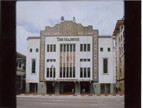
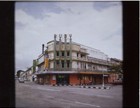
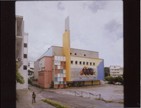
Filem-Filem-Filem Polaroid prints, 8.9 x 10.8 cm each, 2009-2010
A Polaroid print series that charts Ming Wong’s travels in Singapore and Malaysia, in search of ‘architectures of entertainment.’ An ode to the last remaining cinema buildings, it captures the once beautiful but now forgotten ‘dream palaces’ by the early film entrepreneurs.
*In addition, canvas cinema billboards [Four Malay Stories (acrylic emulsion on canvas, 243 x 305 cm, 2009), Life of Imitation (acrylic emulsion on canvas, 222 x 229 cm, 2009), In Love For The Mood (acrylic emulsion on canvas, 243 x 400 cm, 2009)] by Neo Chon Teck (designed by Ming Wong), cinema memorabilia (from the collection of Wong Han Min), and documentaries (by documentary-maker Sherman Ong) are scheduled to be on display.
Additional Information
[Race and Language in Singapore]
After her expulsion from Malaysia. Singapore gained her independence in 1965. Singapore is a complex multi-racial country whose demographic composition consisted of 75% Chinese, 14% Malay, 9% Indian and 2% Other. The three dominant ethnic groups co-exist and its official languages include English, Malay, Mandarin and Tamil. Singapore also has it own unique brand of accented English known as “Singlish.”
[Historical Background of the Golden Era of Malay Cinema]
Ming’s Four Malay Stories takes its material from the Golden Era of Malay cinema during the 1950s and 1960s. This was a turbulent era that saw independence from British colonial rule, the creation of Malaysia and the eventual expulsion of Singapore from that Federation. It is thought that during this era, movies played a role in bringing together the three major ethnic groups. Many classic movies were produced, including those by the iconic R. Ramlee, an actor, singer, composer, director and writer who remains etched in the nation’s memory.
[Ming Wong and Issues Related to Contemporary Culture and Language]
By the early 1970s, the Singapore-based studios became inactive and a steady decline in the film industries of both countries ensured. Only in the 1990s did the Malay language cinema revive in Kuala Lumpur and Singapore took steps to revive its local film industry—this time largely with films in Mandarin, English and occasionally the hybrid Singlish.
Linguistic engineering—as a result of government language policies in the years between 1965 and 2005—has seen English and Mandarin replacing Malay as the lingua franca in multicultural Singapore.
Malay may still be the national language of the island republic, but time has seen it become an increasingly marginalized part in mainstream Singaporean culture.(1)
“I come from Singapore, which is surrounded by the Malayan archipelago, and that sets me off from mainland Chinese people or Chinese from other parts of the world. I have this connection with the origins of the nation of Singapore.
The generation to which I belong, born in the 1970s, have witnessed all these changes. You can’t see the influence of Malaysian culture so clearly today.” (2)
References:
(1) Benjamin McKay, Cinematic Causeway, Ming Wong: Life of Imitation exhibition catalogue, Singapore Art Museum, 2010.
(2) Andrew Maerkle, interview with Ming Wong, Art It, 2011.
Ming Wong: Part I
Ming Wong: Part II
Ming Wong: Part III
—————————————————
Now on sale. Yoshitmo Nara Charity Large-sized Postcard Set
Please check here for access information.
Hara Museum is now participating in MuPon (museum discount ticket system using iPhone application)! http://www.tokyoartbeat.com/apps/mupon
Visit Hara Museum Twitter (in Japanese only) (account name: @haramuseum)
http://twitter.com/haramuseum
http://www.haramuseum.or.jp (museum website)
http://mobile.haramuseum.or.jp (mobile site)
